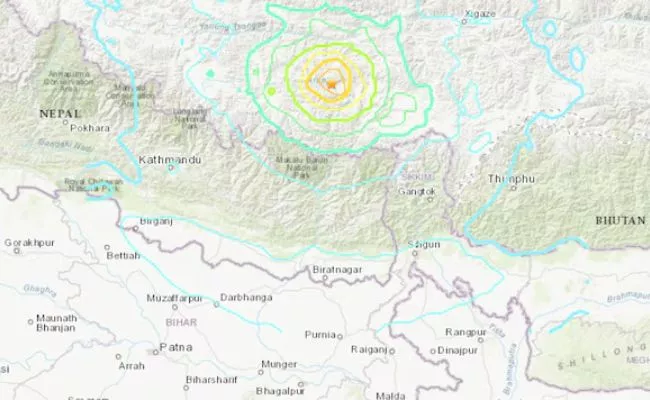.gif)
.gif)

A powerful earthquake with a magnitude of 7.1 struck Tibet on January 7, causing extensive damage and loss of life. The earthquake occurred at 9:05 AM local time, with the epicenter located in Tingri County, approximately 80 kilometers north of Mount Everest. The quake struck at a depth of 10 kilometers, and tremors were felt in neighboring Nepal, Bhutan, and northern India. According to Chinese authorities, at least 95 people have been confirmed dead, and 130 others have been injured. The U.S. Geological Survey confirmed the quake’s magnitude as 7.1, while China’s earthquake monitoring center reported it as a magnitude 6.8.
The earthquake caused significant damage across the region, with over 1,000 homes and buildings destroyed. Shigatse, Tibet’s second-largest city, saw widespread destruction. The impact was especially severe in rural areas, where buildings collapsed, and roads were blocked by debris. Rescue operations are ongoing, with over 1,500 firefighters and emergency personnel dispatched to the affected regions. Local authorities have also sent more than 22,000 items, including tents, blankets, and quilts, to provide shelter for survivors. The harsh winter conditions, with temperatures in the region expected to drop to -18°C, are complicating relief efforts.
Aftershocks have continued to rattle the region, with some reaching magnitudes of up to 4.4. Tremors were reported in several neighboring areas, including parts of Nepal’s hill districts near the border with Tibet. In Nepal, the National Disaster Risk Reduction and Management Authority confirmed that the tremors were felt across seven districts, but no fatalities or significant damage were reported. In India, the state of Bihar, which borders Nepal, also experienced tremors, but no major casualties or property damage have been reported there either.
In the affected areas of Tibet, many remote villages have been cut off, and rescue teams are working to reach these isolated communities. Some villages can only be accessed on foot, which is hampering rescue operations. The Chinese government has mobilized significant resources, including drones and helicopters, to assist in the search and rescue efforts. Power and water supplies have been disrupted in several areas, and emergency services are focusing on restoring these essential services to affected populations.
The earthquake occurred in a seismically active region, as the area lies on the boundary of the Indian and Eurasian tectonic plates, which are responsible for frequent seismic activity. Since 1950, the Lhasa block, the region affected by this quake, has experienced 21 earthquakes with magnitudes of 6 or higher. The largest earthquake in the region in recent years was a 6.9-magnitude tremor in 2017. Despite the destruction, experts have indicated that the likelihood of a larger earthquake occurring in the immediate aftermath is low, though aftershocks may continue.
The Chinese government has implemented strict measures in response to the quake, including closing the Everest region to tourists for safety reasons. The area surrounding Mount Everest, a popular destination for climbers and trekkers, was severely affected, but no climbers were reported to be at base camp during the earthquake. Efforts to assess the full extent of the damage continue, with local authorities working alongside rescue teams to provide immediate relief and aid to those affected.